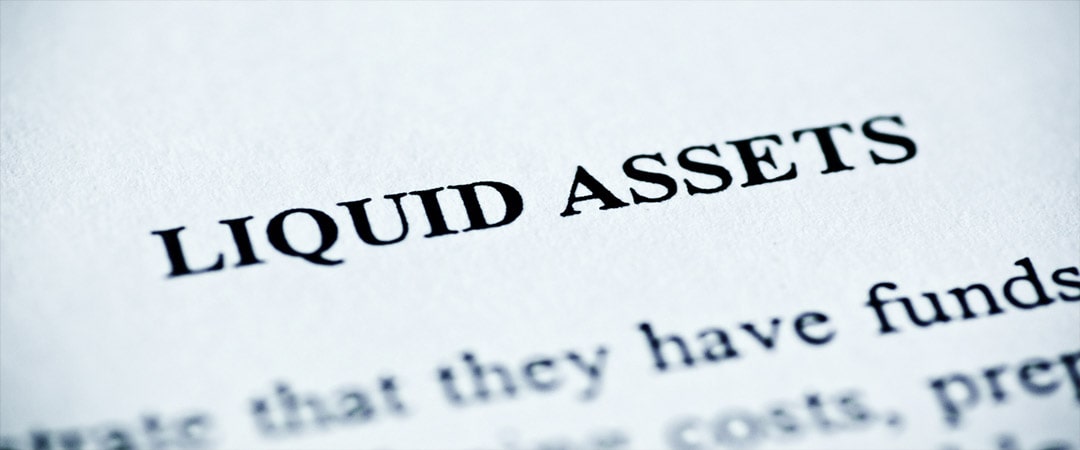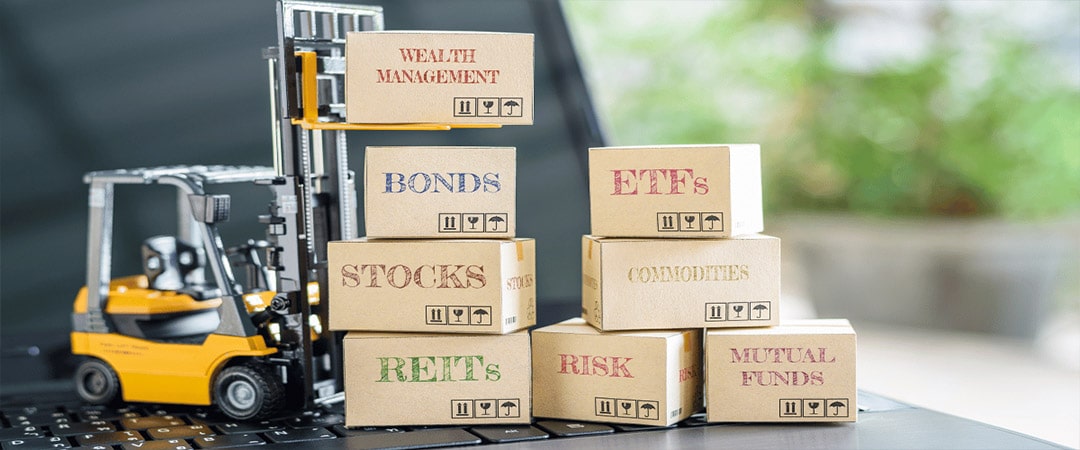Are you planning for retirement? Or maybe you need cash fast for an unexpected opportunity? Liquid assets just might be your perfect solution. Let me explain, liquid assets, like cash and marketable securities, can be quickly converted to cash, giving you the financial flexibility you need. In this article, you’ll learn what liquid assets are, see examples, and discover their pivotal role in your retirement planning.
Learn more about all things retirement with the comprehensive IFW Retirement Guide or check out our free retirement webinar to discover personal tools to realize your retirement goals!
Key Takeaways
- Liquid assets, such as cash, cash equivalents, marketable securities, and accounts receivable, are vital for maintaining financial flexibility and can be quickly converted into cash without significant loss of value.
- In a balanced and diversified investment portfolio, liquid assets provide immediate access to funds during emergencies, while illiquid assets, like real estate and private equity, offer long-term growth potential but come with challenges in liquidity.
- Incorporating liquid assets into retirement planning helps in managing unforeseen expenses and bridging income gaps, and tools like the IFW Retirement Score can assess and enhance retirement readiness by analyzing income sources and asset allocation.
Understanding Liquid Assets

Are you dreaming of a secure retirement or need quick cash for a once-in-a-lifetime opportunity? Liquid assets could be your financial hero – let’s dive in!
Liquid assets are the financial tools that can be quickly and easily converted into cash without a significant loss in value. In the business world, these assets are typically convertible within a year, ensuring that they can meet short-term financial obligations. The ease of conversion to cash, along with large numbers of readily available buyers and secure ownership transfer, are key characteristics that define liquid assets [1].
Liquidity is a critical metric in financial planning because it provides a cushion against financial shocks. Imagine having to sell a piece of real estate quickly; you might need to accept a lower price. However, with liquid assets, you can meet immediate financial needs without losing value. This makes liquid assets indispensable for maintaining financial flexibility and mitigating retirement risks.
Examples of Liquid Assets and Investments

When discussing liquid assets, it’s important to consider various liquid asset examples, each offering unique advantages. Common examples include:
- Cash
- Cash equivalents
- Marketable securities
- Accounts receivable
Cash and Cash Equivalents

Cash is the most liquid asset, often referred to as “hard cash.”
It requires no conversion and can be withdrawn from bank accounts immediately to settle current liabilities, making it the epitome of liquidity. Whether it’s cash on hand or in a savings account, its immediate availability makes it a reliable resource.
Cash equivalents, such as Treasury bills, money market funds, and certificates of deposit, also fall under the category of highly liquid assets. These instruments can be readily converted to cash with minimal risk, providing a secure and swift means to access funds when needed. Financial institutions often hold these as part of their reserves to ensure liquidity [2].
Marketable Securities

Now, the second best thing next to cash in terms of liquidity would definitely be marketable securities.
Marketable securities are financial instruments that can be easily and quickly sold on the market at their market value. Examples include stocks, bonds, and exchange-traded funds (ETFs). The stock market, with its vast pool of buyers and sellers, is a prime example of a liquid market, allowing investors to convert these securities into cash with just a few clicks.
The liquidity of mutual fund shares is evident in investors’ ability to conveniently sell them at any time. The proceeds from such sales are typically received within days, reinforcing the value of marketable securities in an investment portfolio due to their conversion ease, growth potential, and liquidity. This makes mutual funds an attractive option for investors seeking these benefits.
Accounts Receivable

Moving on to accounts receivable – accounts receivable represent money owed to a company by its customers for goods or services delivered.
These can be considered liquid assets if payment is expected soon or if the invoices are sold to a factoring company. The speed at which these receivables are collected plays a crucial role in determining their liquidity and, ultimately, the company’s net income.
However, the collectibility of accounts receivable can vary, affecting their liquidity. If customers delay payments or default, the expected cash flow is disrupted. Therefore, while accounts receivable can provide liquidity, their effectiveness depends on the company’s ability to collect outstanding invoices promptly [3].
Liquid Assets vs. Non-Liquid Assets

Liquid assets stand in stark contrast to non-liquid or illiquid assets. While liquid assets can be quickly converted to cash with minimal impact on their value, non-liquid assets, like real estate, collectibles, and equipment, often require a longer time to sell and may lose significant value in the process.
Illiquid assets, such as real estate and private equity funds, are harder to sell and may not be easily converted into cash. For instance, residential properties spent a median of 2.5 months on the market in 2023, highlighting the time-consuming nature of selling such assets. Comprehending the distinctions between these assets is integral to successful financial planning.
The Role of Liquid Assets in Retirement Planning

Please note, liquid assets do indeed play a pivotal role in effective retirement planning by offering financial stability and flexibility. They provide the means to meet immediate financial obligations and cover unexpected costs.
We will examine the contributions of both liquid and illiquid assets towards a comprehensive retirement strategy.
Illiquid Assets
Illiquid assets, such as real estate, can offer long-term appreciation potential but come with challenges in liquidity. These investments often require a longer time to sell and may entail significant transaction costs. However, they can also provide a hedge against inflation and contribute to wealth accumulation over the long term.
Private equity funds, a type of illiquid asset, can yield higher returns but often come with long lock-up periods. Therefore, while they can boost your investment portfolio, it’s prudent to balance them with more liquid investments to maintain cash accessibility when necessary.
Balancing Your Portfolio

A balanced portfolio that includes both liquid and non-liquid assets helps manage immediate cash needs while ensuring long-term value growth. By diversifying your investments, you can spread risk and improve overall portfolio liquidity.
Financial advisors often recommend a mix of liquid and illiquid assets tailored to your financial goals. This strategy not only mitigates risks associated with market volatility but also ensures that you have the financial flexibility to respond to both opportunities and emergencies.
The Benefits of Holding Liquid Assets

Holding liquid assets can significantly reduce overall financial risk. These assets ensure access to cash value even if the market fluctuates, providing financial security. Whether it’s for an unexpected expense or a timely investment opportunity, liquid assets offer quick access to funds.
Additionally, having a high volume of liquid assets can demonstrate creditworthiness, making it easier to obtain business loans and leading to better loan terms and interest rates. This financial flexibility is invaluable in both personal and business contexts.
How to Increase Your Liquid Assets

Building liquid assets is a crucial part of financial planning. Strategies such as automating savings, regularly reviewing budgets, and reducing overhead expenses can help increase your liquidity.
We will scrutinize these strategies more thoroughly.
Regular Savings
Establishing automatic transfers to a savings account facilitates regular contributions, fostering liquidity growth over time. Such a method eliminates the necessity for active decision-making and encourages disciplined saving practices.
High-yield savings accounts can maximize the interest earned on regular contributions, offering better interest rates compared to standard savings accounts. This not only helps in growing your savings but also enhances your financial security.
Diversified Investments

A diversified investment portfolio typically includes a mix of equities, bonds, and alternative assets, providing a balanced approach to risk management. By spreading investments across different industries and geographies, investors can better protect against localized economic downturns.
Adding liquid assets like Treasury bills, money market funds, and money market accounts to a diversified portfolio can enable swift cash access during a financial emergency, ensuring you have a safety net. One option to consider is investing in a money market fund, which can provide stability and liquidity.
Liquid Assets and Retirement Planning

Incorporating liquid assets into your retirement plan is essential for managing unexpected expenses, bridging income gaps, and maintaining financial stability.
We will discuss various tools and strategies to optimize your readiness for retirement.
Retirement Score
The IFW Retirement Score assesses your retirement readiness by examining your income sources and assets. It applies Monte Carlo Simulation techniques to determine the probability of meeting your retirement income objectives.
Factors such as total assets, asset allocation, and tax obligations contribute to the IFW Retirement Score, which ranges from 0 to 100%.
Maximizing Retirement Income

Diversification of retirement income sources, inclusive of liquid assets, can mitigate market volatility risks and guarantee steady cash streams. Consistent management and reallocation of expenditures can further secure and augment your retirement income.
Volatility buffer strategies and lifetime income annuities are effective tools to secure a consistent income stream during retirement. Additionally, minimizing retirement taxes through strategic planning can significantly increase your net income.
Summary
In conclusion, liquid assets are indispensable in retirement planning. They provide financial flexibility, reduce overall risk, and ensure quick access to cash. By understanding the different types of liquid assets and how to balance them within a diversified portfolio, you can secure a stable and financially sound retirement.
Remember, the key to successful retirement planning lies in a well-balanced mix of liquid and non-liquid assets. Take proactive steps today and call the Institute of Financial Wellness to evaluate and optimize your investment strategy, ensuring a worry-free and prosperous retirement.
Frequently Asked Questions
What is the IFW Retirement Score?
The IFW Retirement Score is a percentage-based metric that assesses the likelihood of meeting your goals of income during retirement. It helps individuals plan and evaluate their retirement preparedness.
How does the IFW Retirement Score work?
The IFW Retirement Score works by using Monte Carlo Simulation, a reliable technique trusted by NASA, engineers, and casinos to assess retirement readiness. This method provides a thorough analysis of potential retirement outcomes.
What can you discover by requesting your Retirement Score?
Requesting your Retirement Score can help you discover strategies for minimizing taxes, protecting your portfolio, and ensuring a secure income stream during retirement. These insights can be invaluable in planning for a financially stable retirement.
Can people improve their retirement score?
Yes, it is possible for people to improve their retirement score! Be sure to visit the IFW Retirement Guide where we cover all things retirement, including tips for improving your Retirement Score.




